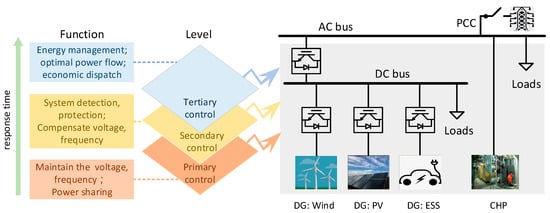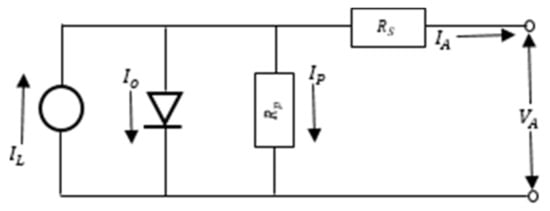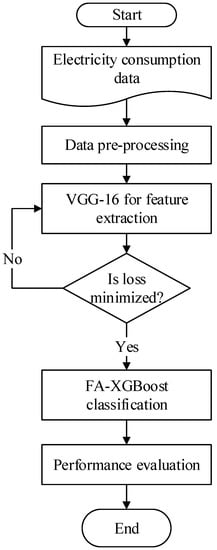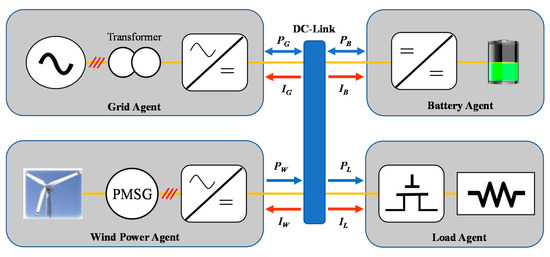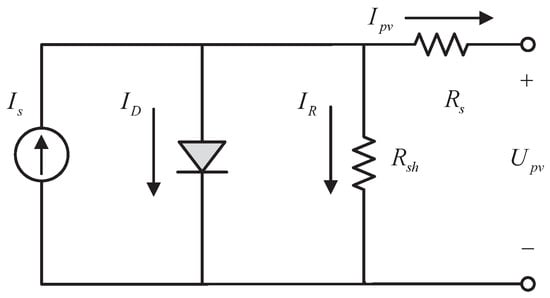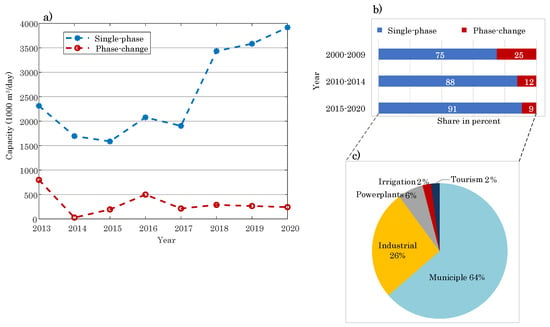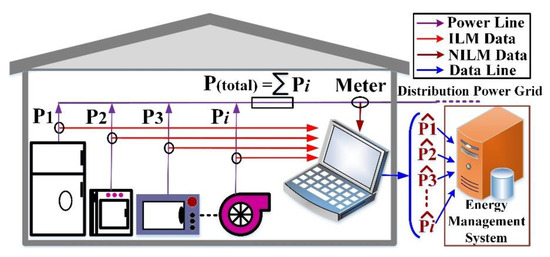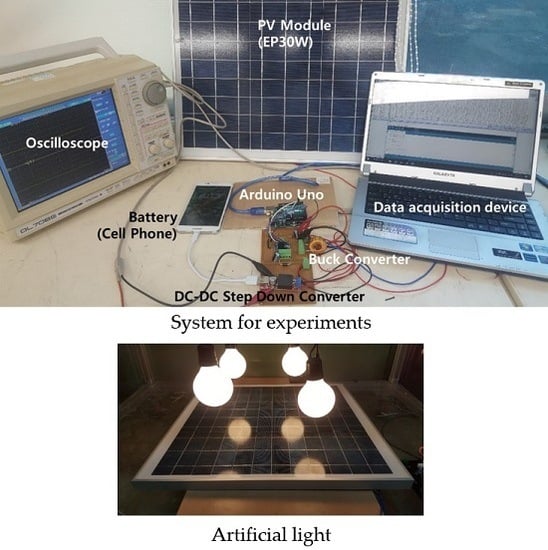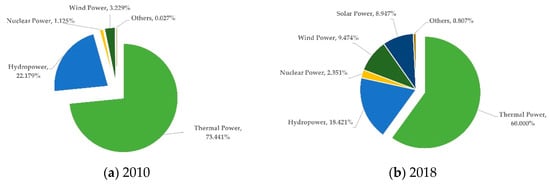Microgrids: The Path to Sustainability
Printed Edition Available!
A printed edition of this Topical Collection is available
here.
Share This Topical Collection
Editor
 Prof. Dr. Amjad Anvari-Moghaddam
Prof. Dr. Amjad Anvari-Moghaddam
 Prof. Dr. Amjad Anvari-Moghaddam
Prof. Dr. Amjad Anvari-Moghaddam
E-Mail
Website
Guest Editor
Department of Energy Technology, Aalborg University, 9220 Aalborg, Denmark
Interests: power system operation and planning; microgrids and active energy networks; energy markets and analytics; operations research and its applications to energy systems
Special Issues, Collections and Topics in MDPI journals
Topical Collection Information
Dear Colleagues,
Microgrids are a growing segment of the energy industry, representing a paradigm shift from centralized structures toward more localized, autonomous, dynamic, and bi-directional energy networks especially in cities and communities. The ability to isolate from the larger grid makes microgrids resilient while their abilities in making scalable energy clusters permit delivery of services that make the grid more sustainable and competitive. Through an optimal design and management process, microgrids could also provide efficient, low-cost, clean energy and help to improve the operation and stability of the regional energy systems.
This Special Issue will cover these promising and dynamic areas of research and development, and will allow gathering of contributions in different aspects of microgrids for unleashing higher degrees of sustainability and resilience in energy systems. This Special Issue also seeks papers to report advances in any aspect of these developments. The manuscripts should be unpublished and report significant advancement.
Dr. Amjad Anvari-Moghaddam
Guest Editor
Manuscript Submission Information
Manuscripts should be submitted online at www.mdpi.com by registering and logging in to this website. Once you are registered, click here to go to the submission form. Manuscripts can be submitted until the deadline. All submissions that pass pre-check are peer-reviewed. Accepted papers will be published continuously in the journal (as soon as accepted) and will be listed together on the collection website. Research articles, review articles as well as short communications are invited. For planned papers, a title and short abstract (about 100 words) can be sent to the Editorial Office for announcement on this website.
Submitted manuscripts should not have been published previously, nor be under consideration for publication elsewhere (except conference proceedings papers). All manuscripts are thoroughly refereed through a single-blind peer-review process. A guide for authors and other relevant information for submission of manuscripts is available on the Instructions for Authors page. Sustainability is an international peer-reviewed open access semimonthly journal published by MDPI.
Please visit the Instructions for Authors page before submitting a manuscript.
The Article Processing Charge (APC) for publication in this open access journal is 2400 CHF (Swiss Francs).
Submitted papers should be well formatted and use good English. Authors may use MDPI's
English editing service prior to publication or during author revisions.
Keywords
- Sustainable energy integration
- Micro- and nano-energy systems and technologies
- Operation and control of microgrids
- Design and development of sustainable microgrids
- Multi-microgrids and microgrid clusters
- AC, DC, and AC-DC hybrid microgrids
- Offshore/Shipboard microgrids
- Grid-connected community microgrid
- Multi-stakeholder microgrids
- Energy internet for microgrids
- Sustainability metrics in microgrids and energy systems
- Energy conversion, conservation and management
- Sustainable/Green energy
Published Papers (15 papers)
Open AccessReview
Hierarchical Control for Microgrids: A Survey on Classical and Machine Learning-Based Methods
by
Sijia Li, Arman Oshnoei, Frede Blaabjerg and Amjad Anvari-Moghaddam
Cited by 18 | Viewed by 4631
Abstract
Microgrids create conditions for efficient use of integrated energy systems containing renewable energy sources. One of the major challenges in the control and operation of microgrids is managing the fluctuating renewable energy generation, as well as sudden load changes that can affect system
[...] Read more.
Microgrids create conditions for efficient use of integrated energy systems containing renewable energy sources. One of the major challenges in the control and operation of microgrids is managing the fluctuating renewable energy generation, as well as sudden load changes that can affect system frequency and voltage stability. To solve the above problems, hierarchical control techniques have received wide attention. At present, although some progress has been made in hierarchical control systems using classical control, machine learning-based approaches have shown promising features and performance in the control and operation management of microgrids. This paper reviews not only the application of classical control in hierarchical control systems in the last five years of references, but also the application of machine learning techniques. The survey also provides a comprehensive description of the use of different machine learning algorithms at different control levels, with a comparative analysis for their control methods, advantages and disadvantages, and implementation methods from multiple perspectives. The paper also presents the structure of primary and secondary control applications utilizing machine learning technology. In conclusion, it is highlighted that machine learning in microgrid hierarchical control can enhance control accuracy and address system optimization concerns. However, challenges, such as computational intensity, the need for stability analysis, and experimental validation, remain to be addressed.
Full article
►▼
Show Figures
Open AccessReview
Distributed Generation and Load Modeling in Microgrids
by
Mohammad AlMuhaini, Abass Yahaya and Ahmed AlAhmed
Cited by 2 | Viewed by 2353
Abstract
Solar PV and wind energy are the most important renewable energy sources after hydroelectric energy with regard to installed capacity, research spending and attaining grid parity. These sources, including battery energy storage systems, and well-established load modeling have been pivotal to the success
[...] Read more.
Solar PV and wind energy are the most important renewable energy sources after hydroelectric energy with regard to installed capacity, research spending and attaining grid parity. These sources, including battery energy storage systems, and well-established load modeling have been pivotal to the success of the planning and operation of electric microgrids. One of the major challenges in modeling renewable-based DGs, battery storage, and loads in microgrids is the uncertainty of modeling their stochastic nature, as the accuracy of these models is significant in the planning and operation of microgrids. There are several models in the literature that model DG and battery storage resources for microgrid applications, and selecting the appropriate model is a challenging task. Hence, this paper examines the most common models of the aforementioned distributed energy resources and loads and delineates the mathematical rigor required for characterizing the models. Several simulations are conducted to demonstrate model performance using manufacturers’ datasheets and actual atmospheric data as inputs.
Full article
►▼
Show Figures
Open AccessArticle
Day-Ahead Scheduling of Electric Vehicles and Electrical Storage Systems in Smart Homes Using a Novel Decision Vector and AHP Method
by
Masoud Alilou, Gevork B. Gharehpetian, Roya Ahmadiahangar, Argo Rosin and Amjad Anvari-Moghaddam
Cited by 6 | Viewed by 1892
Abstract
The two-way communication of electricity and information in smart homes facilitates the optimal management of devices with the ability to charge and discharge, such as electric vehicles and electrical storage systems. These devices can be scheduled considering domestic renewable energy units, the energy
[...] Read more.
The two-way communication of electricity and information in smart homes facilitates the optimal management of devices with the ability to charge and discharge, such as electric vehicles and electrical storage systems. These devices can be scheduled considering domestic renewable energy units, the energy consumption of householders, the electricity tariff of the grid, and other predetermined parameters in order to improve their efficiency and also the technical and economic indices of the smart home. In this paper, a novel framework based on decision vectors and the analytical hierarchy process method is investigated to find the optimal operation schedule of these devices for the day-ahead performance of smart homes. The initial data of the electric vehicle and the electrical storage system are modeled stochastically. The aim of this work is to minimize the electricity cost and the peak demand of the smart home by optimal operation of the electric vehicle and the electrical storage system. Firstly, the different decision vectors for charging and discharging these devices are introduced based on the market price, the produce power of the domestic photovoltaic panel, and the electricity demand of the smart home. Secondly, the analytical hierarchy process method is utilized to implement the various priorities of decision criteria and calculate the ultimate decision vectors. Finally, the operation schedule of the electric vehicle and the electrical storage system is selected based on the ultimate decision vectors considering the operational constraints of these devices and the constraints of charging and discharging priorities. The proposed method is applied to a sample smart home considering different priorities of decision criteria. Numerical results present that although the combination of decision criteria with a high rank of electricity demand has the highest improvement of technical and economic indices of the smart home by about 12 and 26%, the proposed method has appropriate performance in all scenarios for selecting the optimal operation schedule of the electric vehicles and the electrical storage system.
Full article
►▼
Show Figures
Open AccessArticle
Electricity Theft Detection Using Supervised Learning Techniques on Smart Meter Data
by
Zahoor Ali Khan, Muhammad Adil, Nadeem Javaid, Malik Najmus Saqib, Muhammad Shafiq and Jin-Ghoo Choi
Cited by 88 | Viewed by 9883
Abstract
Due to the increase in the number of electricity thieves, the electric utilities are facing problems in providing electricity to their consumers in an efficient way. An accurate Electricity Theft Detection (ETD) is quite challenging due to the inaccurate classification on the imbalance
[...] Read more.
Due to the increase in the number of electricity thieves, the electric utilities are facing problems in providing electricity to their consumers in an efficient way. An accurate Electricity Theft Detection (ETD) is quite challenging due to the inaccurate classification on the imbalance electricity consumption data, the overfitting issues and the High False Positive Rate (FPR) of the existing techniques. Therefore, intensified research is needed to accurately detect the electricity thieves and to recover a huge revenue loss for utility companies. To address the above limitations, this paper presents a new model, which is based on the supervised machine learning techniques and real electricity consumption data. Initially, the electricity data are pre-processed using interpolation, three sigma rule and normalization methods. Since the distribution of labels in the electricity consumption data is imbalanced, an Adasyn algorithm is utilized to address this class imbalance problem. It is used to achieve two objectives. Firstly, it intelligently increases the minority class samples in the data. Secondly, it prevents the model from being biased towards the majority class samples. Afterwards, the balanced data are fed into a Visual Geometry Group (VGG-16) module to detect abnormal patterns in electricity consumption. Finally, a Firefly Algorithm based Extreme Gradient Boosting (FA-XGBoost) technique is exploited for classification. The simulations are conducted to show the performance of our proposed model. Moreover, the state-of-the-art methods are also implemented for comparative analysis, i.e., Support Vector Machine (SVM), Convolution Neural Network (CNN), and Logistic Regression (LR). For validation, precision, recall, F1-score, Matthews Correlation Coefficient (MCC), Receiving Operating Characteristics Area Under Curve (ROC-AUC), and Precision Recall Area Under Curve (PR-AUC) metrics are used. Firstly, the simulation results show that the proposed Adasyn method has improved the performance of FA-XGboost classifier, which has achieved F1-score, precision, and recall of 93.7%, 92.6%, and 97%, respectively. Secondly, the VGG-16 module achieved a higher generalized performance by securing accuracy of 87.2% and 83.5% on training and testing data, respectively. Thirdly, the proposed FA-XGBoost has correctly identified actual electricity thieves, i.e., recall of 97%. Moreover, our model is superior to the other state-of-the-art models in terms of handling the large time series data and accurate classification. These models can be efficiently applied by the utility companies using the real electricity consumption data to identify the electricity thieves and overcome the major revenue losses in power sector.
Full article
►▼
Show Figures
Open AccessArticle
A Power Flow Control Strategy for Hybrid Control Architecture of DC Microgrid under Unreliable Grid Connection Considering Electricity Price Constraint
by
Faris Adnan Padhilah and Kyeong-Hwa Kim
Cited by 9 | Viewed by 3129
Abstract
This paper presents a power flow control strategy for a hybrid control architecture of the DC microgrid (DCMG) system under an unreliable grid connection considering the constraint of electricity price. To overcome the limitation of the existing schemes, a hybrid control architecture which
[...] Read more.
This paper presents a power flow control strategy for a hybrid control architecture of the DC microgrid (DCMG) system under an unreliable grid connection considering the constraint of electricity price. To overcome the limitation of the existing schemes, a hybrid control architecture which combines the centralized control and distributed control is applied to control DCMG. By using the hybrid control approach, a more optimal and reliable DCMG system can be constructed even though a fault occurs in the grid or a central controller (CC). The power flow control strategy for the hybrid DCMG control architecture also takes the constraint of electricity price into account for the purpose of minimizing the electricity cost. In the proposed hybrid control, the high bandwidth communication (HBC) link is used in the centralized control to connect the CC with DCMG power agents. On the other hand, the low bandwidth communication (LBC) link is employed to constitute the distributed control. A small size of data is used to exchange the information fast between the agents and CC, or between each agent and its neighbors, which increases the reliability and robustness of the DCMG system in case of a fault in the communication link of the centralized control. A DCMG system with 400-V rated DC-link voltage which consists of a wind power agent, a battery agent, a grid agent, a load agent, and a CC is constructed in this study by using three power converters based on 32-bit floating point digital signal processor (DSP) TMS320F28335 controller. Various simulation and experimental results prove that the proposed scheme improves the system stability and robustness even in the presence of a fault in the communication link of the centralized control. In addition, the proposed scheme is capable of maintaining the DC-link voltage stably at the nominal value without severe transients both in the centralized control and distributed control, as well as both in the grid-connected case and islanded case. Finally, the scalability of the DCMG system is tested by adding and removing additional wind power agent and battery agent during a certain period.
Full article
►▼
Show Figures
Open AccessArticle
A Novel Command-Filtered Adaptive Backstepping Control Strategy with Prescribed Performance for Photovoltaic Grid-Connected Systems
by
Weiming Zhang, Tinglong Pan, Dinghui Wu and Dezhi Xu
Cited by 4 | Viewed by 2345
Abstract
With the aim of solving the power fluctuation and bus voltage instability problems caused by external environment variations in the photovoltaic grid-connected system, a prescribed performance-based adaptive backstepping controller is proposed for the system to regulate the bus voltage and the inverter current.
[...] Read more.
With the aim of solving the power fluctuation and bus voltage instability problems caused by external environment variations in the photovoltaic grid-connected system, a prescribed performance-based adaptive backstepping controller is proposed for the system to regulate the bus voltage and the inverter current. First, the mathematical model of the grid-connected inverter is established, in which the uncertain system parameters are estimated via a designed projection-based adaptive law. Then, the command-filtered backstepping sliding mode control method is applied to the system for power regulation. In order to achieve favorable tracking performance, the prescribed performance technique is introduced in the voltage regulation strategy by constraining the compensated voltage tracking error within a certain range from a novel point of view. Finally, the simulation is carried out considering the variations of environmental situations, and the obtained results demonstrate the sound performance of the prescribed performance-based control strategy with respect to the photovoltaic grid-connected system.
Full article
►▼
Show Figures
Open AccessArticle
The Role of Renewable Energy Resources in Sustainability of Water Desalination as a Potential Fresh-Water Source: An Updated Review
by
Esmaeil Ahmadi, Benjamin McLellan, Behnam Mohammadi-Ivatloo and Tetsuo Tezuka
Cited by 57 | Viewed by 12421
Abstract
Desalination is becoming a practical option to meet water demand in an increasing number of locations that are facing water scarcity. Currently, more than 150 countries in the world are already using desalination technologies, which account for about one percent of the world’s
[...] Read more.
Desalination is becoming a practical option to meet water demand in an increasing number of locations that are facing water scarcity. Currently, more than 150 countries in the world are already using desalination technologies, which account for about one percent of the world’s drinking water. Although for specific regions, desalination is the only feasible solution to close the supply–demand gap (for example the production of desalinated seawater in the Middle East is predicted to rise almost fourteen-fold by 2040), the sustainability of desalination systems is still remarkably under question. This review aims first to investigate the technical and economic trends and environmental and social aspects of desalination systems and then, in the second stage, to give an overview of the role of renewable energy technologies in the sustainability of the future water systems with an increasing share of desalination.
Full article
►▼
Show Figures
Open AccessArticle
Stochastic Operation of a Solar-Powered Smart Home: Capturing Thermal Load Uncertainties
by
Esmaeil Ahmadi, Younes Noorollahi, Behnam Mohammadi-Ivatloo and Amjad Anvari-Moghaddam
Cited by 16 | Viewed by 3817
Abstract
This study develops a mixed-integer linear programming (MILP) model for the optimal and stochastic operation scheduling of smart buildings. The aim of this study is to match the electricity demand with the intermittent solar-based renewable resources profile and to minimize the energy cost.
[...] Read more.
This study develops a mixed-integer linear programming (MILP) model for the optimal and stochastic operation scheduling of smart buildings. The aim of this study is to match the electricity demand with the intermittent solar-based renewable resources profile and to minimize the energy cost. The main contribution of the proposed model addresses uncertainties of the thermal load in smart buildings by considering detailed types of loads such as hot water, heating, and ventilation loads. In smart grids, buildings are no longer passive consumers. They are controllable loads, which can be used for demand-side energy management. Smart homes, as a domain of Internet of Things (IoT), enable energy systems of the buildings to operate as an active load in smart grids. The proposed formulation is cast as a stochastic MILP model for a 24-h horizon in order to minimize the total energy cost. In this study, Monte Carlo simulation technique is used to generate 1000 random scenarios for two environmental factors: the outdoor temperature, and solar radiation. Therefore in the proposed model, the thermal load, the output power of the photovoltaic panel, solar collector power generation, and electricity load become stochastic parameters. The proposed model results in an energy cost-saving of 20%, and a decrease of the peak electricity demand from 7.6 KWh to 4.2 KWh.
Full article
►▼
Show Figures
Open AccessEditor’s ChoiceArticle
Improving Residential Load Disaggregation for Sustainable Development of Energy via Principal Component Analysis
by
Arash Moradzadeh, Omid Sadeghian, Kazem Pourhossein, Behnam Mohammadi-Ivatloo and Amjad Anvari-Moghaddam
Cited by 45 | Viewed by 4045
Abstract
The useful planning and operation of the energy system requires a sustainability assessment of the system, in which the load model adopted is the most important factor in sustainability assessment. Having information about energy consumption patterns of the appliances allows consumers to manage
[...] Read more.
The useful planning and operation of the energy system requires a sustainability assessment of the system, in which the load model adopted is the most important factor in sustainability assessment. Having information about energy consumption patterns of the appliances allows consumers to manage their energy consumption efficiently. Non-intrusive load monitoring (NILM) is an effective tool to recognize power consumption patterns from the measured data in meters. In this paper, an unsupervised approach based on dimensionality reduction is applied to identify power consumption patterns of home electrical appliances. This approach can be utilized to classify household activities of daily life using data measured from home electrical smart meters. In the proposed method, the power consumption curves of the electrical appliances, as high-dimensional data, are mapped to a low-dimensional space by preserving the highest data variance via principal component analysis (PCA). In this paper, the reference energy disaggregation dataset (REDD) has been used to verify the proposed method. REDD is related to real-world measurements recorded at low-frequency. The presented results reveal the accuracy and efficiency of the proposed method in comparison to conventional procedures of NILM.
Full article
►▼
Show Figures
Open AccessArticle
Enhancing Integrated Power and Water Distribution Networks Seismic Resilience Leveraging Microgrids
by
Javad Najafi, Ali Peiravi and Amjad Anvari-Moghaddam
Cited by 13 | Viewed by 2877
Abstract
An earthquake, as one of the natural disasters, can damage vital infrastructures including the power distribution network (PDN) and water distribution network (WDN). The dependency of WDN on PDN is the other challenge that can be highlighted after the earthquake. In this paper,
[...] Read more.
An earthquake, as one of the natural disasters, can damage vital infrastructures including the power distribution network (PDN) and water distribution network (WDN). The dependency of WDN on PDN is the other challenge that can be highlighted after the earthquake. In this paper, the resilience improvement planning of integrated PDN and WDN against earthquakes is solved through stochastic programming. Power lines and substation hardening in PDN and water pipes rehabilitation with better material are the candidate strategies to minimize the expected inaccessibility value of loads to power and water as the resilience index and to minimize the cost of strategies. The proposed model is tested on the modified IEEE 33-bus PDN with a designed WDN and its performance is evaluated under different cases where the impacts of using distributed generations (DG) in PDN, equipping the water pumps to back-up generators, and the value of loads accessibility to water on the system resilience are investigated.
Full article
►▼
Show Figures
Open AccessArticle
A Spatial-Based Integration Model for Regional Scale Solar Energy Technical Potential
by
Younes Noorollahi, Mohammad Mohammadi, Hossein Yousefi and Amjad Anvari-Moghaddam
Cited by 9 | Viewed by 3252
Abstract
One of the main objectives of human society in the present century is to achieve clean and sustainable energy through utilization of renewable energy sources (RESs). In this paper, the main purpose is to identify the locations that are suitable for solar energy
[...] Read more.
One of the main objectives of human society in the present century is to achieve clean and sustainable energy through utilization of renewable energy sources (RESs). In this paper, the main purpose is to identify the locations that are suitable for solar energy in the Kurdistan province of Iran. Initially, solar-related data are collected, and suitable criterion and assessment methods are chosen according to the available data. Then, the theoretical potential of solar energy is assessed and the solar radiation map is prepared. Moreover, the technical potential of various solar technologies is evaluated in that study area. These technologies include concentrating solar power (CSP) and photovoltaic (PV) in power plant applications, and rooftop PV panels and solar water heaters in general applications. The results show that the Kurdistan province has the potential capacity for 691 MW of solar photovoltaic power plants and 645 MW of CSP plants. In the case of using solar water heaters, 283 million cubic meters of natural gas and 1.2 million liters of gasoline could be saved in fuel consumption. The savings in the application of domestic PV will be 10.2 MW in power generation.
Full article
►▼
Show Figures
Open AccessEditor’s ChoiceArticle
A Deep Neural Network-Assisted Approach to Enhance Short-Term Optimal Operational Scheduling of a Microgrid
by
Fatma Yaprakdal, M. Berkay Yılmaz, Mustafa Baysal and Amjad Anvari-Moghaddam
Cited by 25 | Viewed by 3701
Abstract
The inherent variability of large-scale renewable energy generation leads to significant difficulties in microgrid energy management. Likewise, the effects of human behaviors in response to the changes in electricity tariffs as well as seasons result in changes in electricity consumption. Thus, proper scheduling
[...] Read more.
The inherent variability of large-scale renewable energy generation leads to significant difficulties in microgrid energy management. Likewise, the effects of human behaviors in response to the changes in electricity tariffs as well as seasons result in changes in electricity consumption. Thus, proper scheduling and planning of power system operations require accurate load demand and renewable energy generation estimation studies, especially for short-term periods (hour-ahead, day-ahead). The time-sequence variation in aggregated electrical load and bulk photovoltaic power output are considered in this study to promote the supply-demand balance in the short-term optimal operational scheduling framework of a reconfigurable microgrid by integrating the forecasting results. A bi-directional long short-term memory units based deep recurrent neural network model, DRNN Bi-LSTM, is designed to provide accurate aggregated electrical load demand and the bulk photovoltaic power generation forecasting results. The real-world data set is utilized to test the proposed forecasting model, and based on the results, the DRNN Bi-LSTM model performs better in comparison with other methods in the surveyed literature. Meanwhile, the optimal operational scheduling framework is studied by simultaneously making a day-ahead optimal reconfiguration plan and optimal dispatching of controllable distributed generation units which are considered as optimal operation solutions. A combined approach of basic and selective particle swarm optimization methods, PSO&SPSO, is utilized for that combinatorial, non-linear, non-deterministic polynomial-time-hard (NP-hard), complex optimization study by aiming minimization of the aggregated real power losses of the microgrid subject to diverse equality and inequality constraints. A reconfigurable microgrid test system that includes photovoltaic power and diesel distributed generators is used for the optimal operational scheduling framework. As a whole, this study contributes to the optimal operational scheduling of reconfigurable microgrid with electrical energy demand and renewable energy forecasting by way of the developed DRNN Bi-LSTM model. The results indicate that optimal operational scheduling of reconfigurable microgrid with deep learning assisted approach could not only reduce real power losses but also improve system in an economic way.
Full article
►▼
Show Figures
Open AccessArticle
A Novel VSG-Based Accurate Voltage Control and Reactive Power Sharing Method for Islanded Microgrids
by
Bowen Zhou, Lei Meng, Dongsheng Yang, Zhanchao Ma and Guoyi Xu
Cited by 7 | Viewed by 3784
Abstract
Islanded microgrids (IMGs) are more likely to be perturbed by renewable generation and load demand fluctuation, thus leading to system instability. The virtual synchronous generator (VSG) control has become a promising method in the microgrids stability control area for its inertia-support capability. However,
[...] Read more.
Islanded microgrids (IMGs) are more likely to be perturbed by renewable generation and load demand fluctuation, thus leading to system instability. The virtual synchronous generator (VSG) control has become a promising method in the microgrids stability control area for its inertia-support capability. However, the improper power sharing and inaccurate voltage control problems of the distributed generations (DGs) in microgrids still has not been solved with a unified method. This paper proposes a novel VSG equivalent control method named Imitation Excitation Control (IEC). In this method, a multi-objective control strategy for voltage and reactive power in a low voltage grid that considers a non-negligible resistance to reactance ratio (R/X) is proposed. With the IEC method, the voltage drop across feeders is compensated, thus the terminal voltage of each inverter will be regulated, which will effectively stabilize the PCC (point of common coupling) voltage and inhibit the circular current. Meanwhile, this method can realize accurate reactive power tracking the reference value, making it accessible for reactive power scheduling. What is more, the reasonability of the IEC model, namely the equivalent mechanical characteristic and transient process inertia support between VSGs and conventional synchronous generators (SG), is illustrated in this paper. Moreover, steady-state stability is proved by the small-signal modeling method, and the energy required by inertia support is given. Finally, the simulation result validates the effectiveness of the proposed method, and it is also demonstrated that the proposed method outperforms the conventional droop control method.
Full article
►▼
Show Figures
Open AccessArticle
Improvement of MPPT Control Performance Using Fuzzy Control and VGPI in the PV System for Micro Grid
by
Jong-Chan Kim, Jun-Ho Huh and Jae-Sub Ko
Cited by 28 | Viewed by 3627
Abstract
This paper proposes the method for maximum power point tracking (MPPT) of the photovoltaic (PV) system. The conventional PI controller controls the system with fixed gains. Conventional PI controllers with fixed gains cannot satisfy both transient and steady-state. Therefore, to overcome the shortcomings
[...] Read more.
This paper proposes the method for maximum power point tracking (MPPT) of the photovoltaic (PV) system. The conventional PI controller controls the system with fixed gains. Conventional PI controllers with fixed gains cannot satisfy both transient and steady-state. Therefore, to overcome the shortcomings of conventional PI controllers, this paper presents the variable gain proportional integral (VGPI) controllers that control the gain value of PI controllers using fuzzy control. Inputs of fuzzy control used in the VGPI controller are the slope from the voltage-power characteristics of the PV module. This paper designs fuzzy control’s membership functions and rule bases using the characteristics that the slope decreases in size, as it approaches the maximum power point and increases as it gets farther. In addition, the gain of the PI controller is adjusted to increase in transient-state and decrease in steady-state in order to improve the error in steady-state and the tracking speed of maximum power point of the PV system. The performance of the VGPI controller has experimented in cases where the solar radiation is constant and the solar radiation varies, to compare with the performance of the P&O method, which is traditionally used most often in MPPT, and the performance of the PI controller, which is used most commonly in the industry field. Finally, the results from the experiment are presented and the results are analyzed.
Full article
►▼
Show Figures
Open AccessArticle
The Impact of Government Subsidy on Renewable Microgrid Investment Considering Double Externalities
by
Deng Xu and Yong Long
Cited by 9 | Viewed by 3737
Abstract
Since microgrids require public support to make economic sense, governments regularly subsidize renewable microgrids to increase their renewable energy market penetration. In this study, we investigated the optimal subsidy level for governments to correct the market failure of microgrids and analyzed the impacts
[...] Read more.
Since microgrids require public support to make economic sense, governments regularly subsidize renewable microgrids to increase their renewable energy market penetration. In this study, we investigated the optimal subsidy level for governments to correct the market failure of microgrids and analyzed the impacts of regulation on the interaction between a microgrid and a distribution network operator (DNO). Specifically, we proposed economic rationales for government subsidies for microgrids regarding public interest benefits in relation to double externalities (learning spillover effect and environmental externality). We incorporated the double externalities into a three-echelon game model in an electricity supply chain with one regulator, one microgrid, and one DNO, in which the regulator decides the subsidy level to achieve maximal social welfare. We found that the double externalities and double marginalization caused underinvestment in microgrid capacity in the scenario without government intervention. The government could choose the appropriate subsidy level to achieve the system optimum, which led to a triple win for the microgrid, the DNO, and the social planner. Our analytical results also showed that the microgrid gained more benefits from regulation than the DNO. The microgrid may offer a negative wholesale price to the DNO in exchange for more opportunities to import electricity into the grid, especially when the investment cost is sufficiently low. Our study suggests that supporting microgrids requires a subsidy phase-out mechanism and alternative market-oriented policies with the development of the microgrid industry.
Full article
►▼
Show Figures






